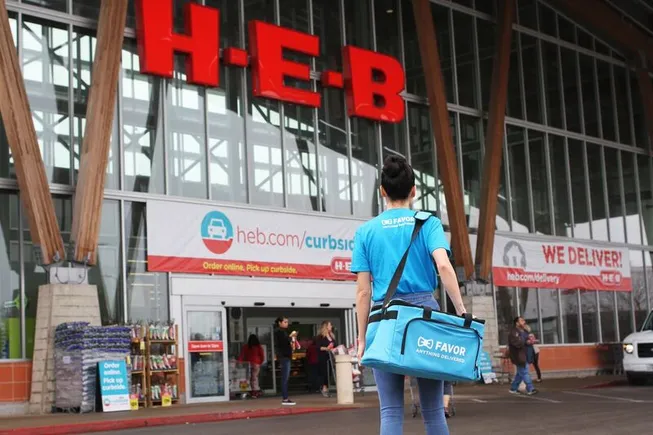The online grocery market in the United States experienced significant growth in December, with sales reaching $9.6 billion, a nearly 19% increase from the previous year. According to a report from Brick Meets Click and Mercatus, delivery sales saw a 24% increase to $4 billion, while pickup sales rose by 5% to $3.8 billion. Ship-to-home sales also surged by 40% to $1.8 billion during the same period.
The growth of online grocery sales was attributed to retailers offering sharp discounts on subscription and membership fees, driving consumer interest in e-commerce platforms. Grocery e-commerce saw a substantial increase in the latter months of 2024, highlighting the shift towards online shopping in the food retail industry.
Brick Meets Click reported that delivery services solidified their position in the market, accounting for nearly 42% of grocery e-commerce sales in December. Pickup services, on the other hand, claimed about 39% of the market share, while ship-to-home channels represented close to 19% of the market. This data indicates a shift in consumer preferences towards delivery services over traditional pickup options.
Mass retailers, such as Walmart, performed better in the online grocery space compared to traditional food retailers in December. A majority of shoppers who purchased groceries online directed their business towards mass retailers, showcasing the dominance of larger retailers in the e-commerce landscape. However, supermarkets and hard discounters still maintained a significant portion of online grocery sales.
The report also highlighted that shoppers who made online grocery purchases with mass retailers were more likely to make repeat orders within 30 days compared to those who shopped at supermarkets. This trend indicates the importance of customer loyalty and personalized incentives in driving repeat business in the online grocery sector.
Mark Fairhurst, Chief Growth Marketing Officer at Mercatus, emphasized the importance of offering savings and targeted loyalty perks to boost eGrocery sales for regional grocers. By leveraging AI-driven personalization and integrated loyalty solutions, grocers can convert occasional shoppers into loyal digital customers, driving sustained growth in both online and in-store channels.
The data presented in the report was collected through a survey of 1,694 grocery shoppers conducted by Brick Meets Click at the end of December. This comprehensive analysis provides valuable insights into the evolving landscape of online grocery sales and consumer behavior trends in the market.
In conclusion, the online grocery market in the U.S. experienced significant growth in December, driven by increased sales in delivery services and promotional discounts from retailers. The shift towards e-commerce platforms and the dominance of mass retailers highlight the changing dynamics of the food retail industry. By focusing on customer loyalty and personalized incentives, grocers can capitalize on the growing trend of online shopping and drive sustained growth in the digital marketplace.




